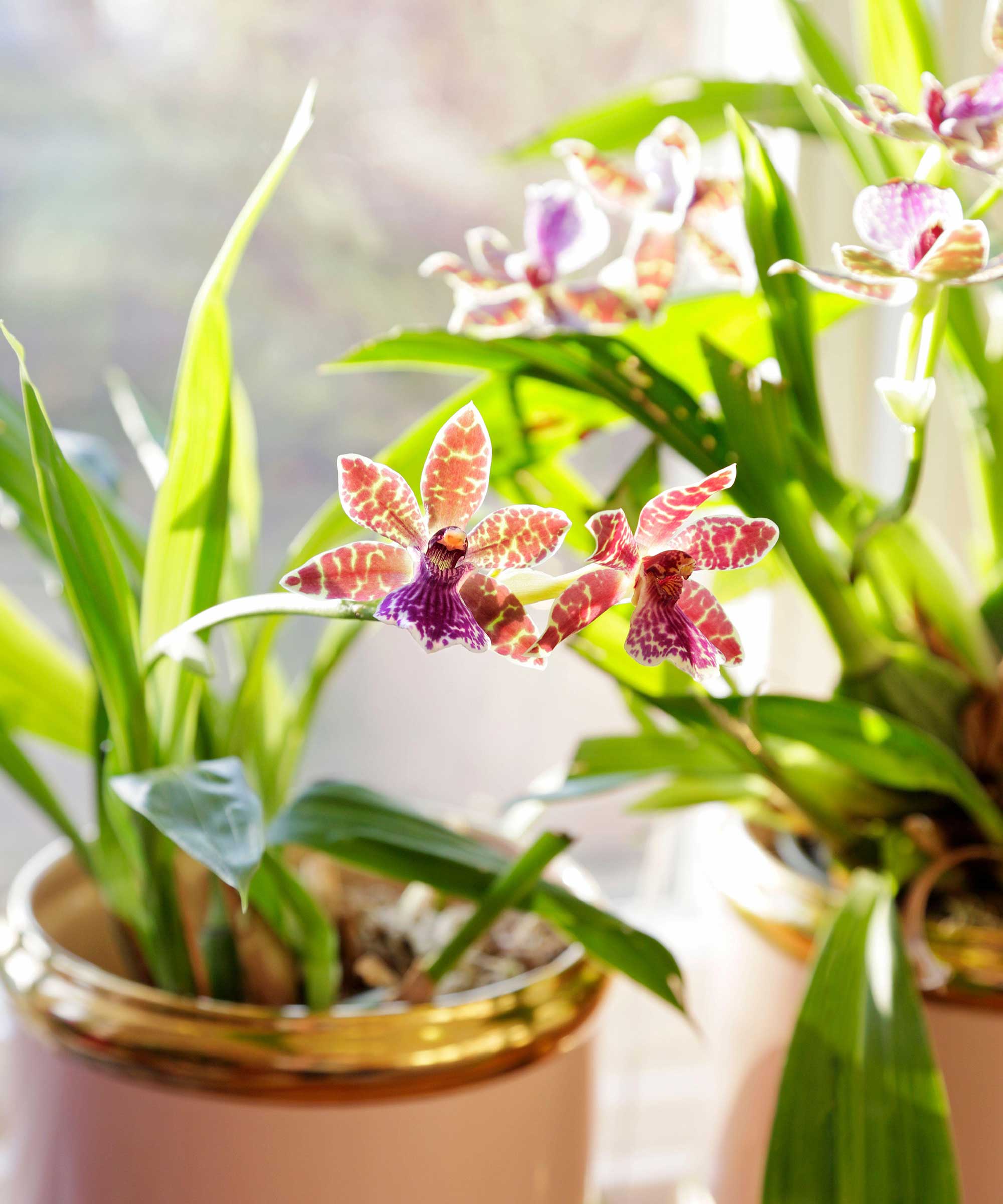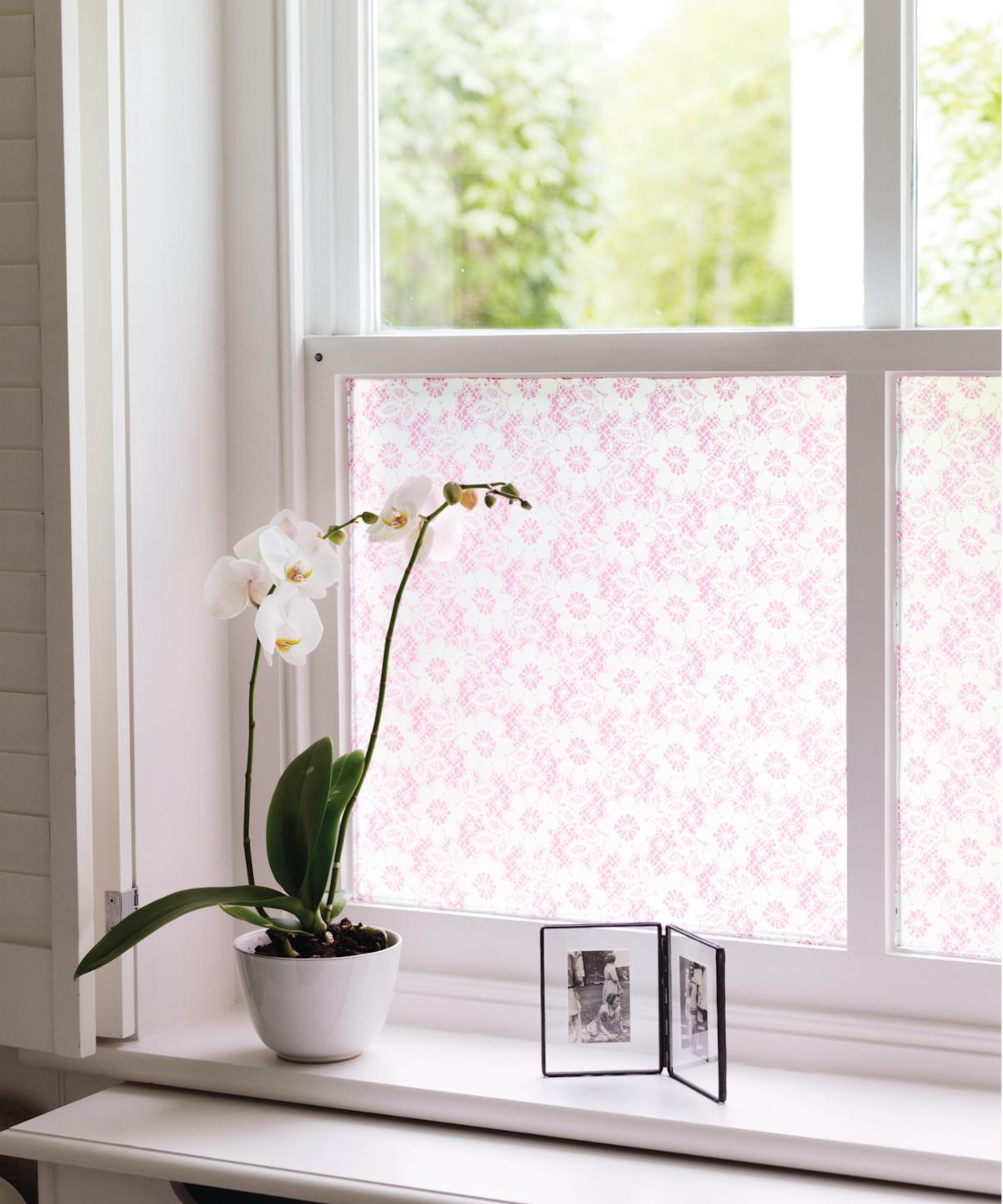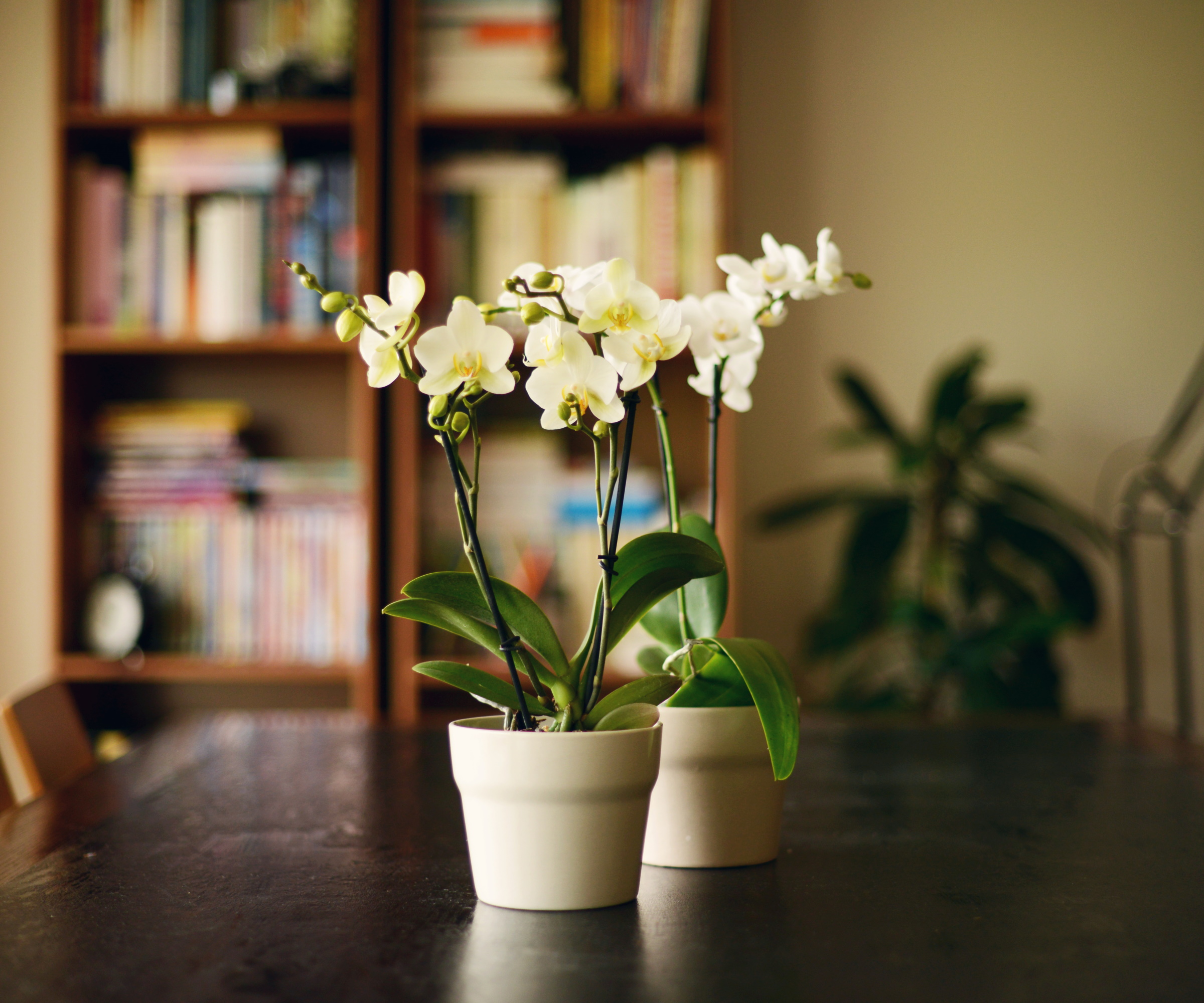
Many homeowners love to grow orchids indoors – and it's easy to see why. The blooms, often in bright colors, add beauty and elegance to any interior scheme. And with the right care, the plants can last for years.
True, orchids have a reputation for being a little fussy, but once you understand the proper conditions to help your orchid thrive, these indoor plants can be quite straightforward to maintain.
‘While people can often be intimidated by orchid maintenance, in reality these tropical flowers are very easy to care for,’ says Paige Harmon at Westerlay Orchids. ‘Finding just the right area in your home that provides the best light and temperature is the first step to good orchid care. But of equal importance is appropriate and timely watering.’ Here, Paige and other plant experts share their top tips on how to care for orchids to guarantee your indoor flowering plant thrives in your home for longer.

7 expert tips for successful orchid care
While orchid care is not particularly time-consuming, you do need to know the correct way to look after them.
Otherwise, your orchid may wilt, discolor, stop blooming, or even die. But, it doesn't have to be complicated – these seven tips will set you on the right track:
1. Understand orchid types

Orchid care seems to be a complicated issue, but it doesn’t need to be. The secret is to know what type of orchid it is, and once you provide it with the right conditions, it will look after itself.
‘Orchids are one of the largest plant families, yet out of the tens of thousands of species, fewer than 100 species and a handful of genera are widely commercially grown. These include Phalaenopsis, Dendrobium, Cymbidium, Paphiopedilum, Cattleya, and Oncidium,’ says Brad Biren, an experienced botanist with a specialty in orchidology.
He explains that Dendrobium, Cattleya, Cymbidium, and Oncidium belong to the same ‘tribe’, requiring similar care, while Phalaenopsis and Paphiopedilum orchids have slightly different needs.
If you aren’t sure, Brad suggests looking at the stems and leaves. To identify the Dendrobium ‘tribe’, ‘imagine all of your orchids that have canes, pseudobulbs, or a very clear stem.
'Phalaenopsis has mostly large floppy leaves and an almost indistinct stem. Paphiopedilum or lady slipper orchids have longer narrower leaves and are by far the most challenging within this group,' he says.
While cymbidium is an example of a cool-growing orchid you can grow outdoors, Phalaenopsis, or moth orchids (from Walmart), are the most common houseplant orchids, which better suit indoor conditions.
2. Place your orchid somewhere warm

Temperature requirements vary between different orchid types, but getting it right is an important aspect of orchid care.
Their preferred temperature very much depends on plant origins – for example, moth orchids are tropical and warm-growing, while Cymbidiums are from the Himalayas and tolerate much cooler conditions.
Paige Harmon recommends that for most orchids the best range is 65-80°F while blooming. Orchids also benefit from a slightly lower temperature at night (10-15°F cooler).
You can use this room thermometer from Amazon to monitor room temperatures for your orchid. If you're struggling to keep temperatures up, consider using a heat mat from Amazon.
While your orchid may tolerate some degree of being too warm or too cold, be careful this isn’t for a prolonged period. ‘Heating improperly will lead to adverse side effects for your orchids, including causing their tissue to dry out and wither prematurely,' says plant expert Lindsey Hyland, founder of Urban Organic Yield.
3. Provide bright light for your orchid

Orchids tend to prefer indirect light – though some exposure to sunlight is ideal. However, similarly to temperature, when it comes to how much light an orchid should receive it's important to know where the orchid originates from.
Moth orchids and cool-growing Oncidiums will require much less light than Vandas or Dendrobium, for example.
‘Orchids prefer a location in the home that faces south or east,' says horticulturalist Shannon Caringi at Trillium Living. 'Windows that face west can be too hot and sunny during the summer months. However, they may be perfect in cooler seasons.’
Keep an eye on your orchid’s leaves, as they are a good indicator of whether it is receiving enough light. ‘Orchid leaves can become leaf scorched, so avoid placing them in hot, direct sun,’ adds Shannon.
‘Orchids with dark green leaves are not receiving enough light, while light green leaves with yellow tones indicate that the orchid is receiving enough light to bloom.’
4. Increase humidity levels for your orchid

As indoor tropical plants, orchids like a humidity range of between 40-70%, which is more humid than most homes. Too little humidity can result in wrinkled orchid leaves and a lack of blooms.
If you only have a few orchids, then you can increase the humidity in that area by using pebble trays for plants (like this pebble tray from Amazon), or even just adding a few more houseplants nearby.
If you have a number of orchids, then you may want to consider investing in other methods to increase humidity for indoor plants. For example, you can use a humidifier (from Amazon), although this risks introducing condensation and mold into the home.
When humidity is high, air movement is key, so a fan in the room – not pointed directly at the orchids – will keep them happy. Make sure to also open windows for ventilation, which will help reduce a build-up of mold and condensation.
Perhaps the most low-maintenance spot for an orchid in your home? The bathroom. The humidity given off from regular showers and baths can be enough to sustain orchid-friendly humidity levels.
5. Water orchids sparingly

Knowing how to water orchids is one of the more difficult aspects of how to care for orchids correctly.
‘Orchids are far more often overwatered than underwatered,’ says Paige Harmon. ‘For plants grown in bark, water once per week at most, and only if the potting medium is dry.
'Phalaenopsis grown in sphagnum moss need water less frequently – every 10 days should be sufficient. Be sure to water moss thoroughly, since moss that is very dry may not immediately absorb water.’
Another trick to know how often to water orchids is to check the aerial roots. These are roots that grow above surface level. When green, they're sufficiently hydrated. When silver, they need a top up of water.
The seasons will also affect how often your orchid will need to be watered. You'll find it needs less watering in the cool winter months, and more during the warm summer months.
Use this soil moisture meter from Amazon to help monitor moisture levels in your orchid's pot.
6. Fertilize your orchid in spring and summer

Orchids benefit from a fertilizer at every other watering during their active growth season in spring and summer.
You can buy specific orchid feed – try Amazon – to fertilize orchids, or use a general purpose houseplant fertilizer (from Amazon). You can also make your own orchid fertilizer for a more organic feed.
Whichever you choose to use, feeding orchids can help give them a boost of essential plant nutrients when they need it most while putting on new growth and blooming.
7. Deadhead spent orchid blooms

Again, the best way to prune orchids all depends on the variety you are growing – but when done right, it can help encourage them to rebloom.
For some, snipping off spent flowers is all you should do. However, it can also be a good idea to cut back other areas of the plant – for instance, if a stem has turned yellow.
Whenever pruning orchids, you should use essential pruning tools to make sharp, clean cuts. These houseplant snips from Amazon are a reliable choice.
If you find your orchid has experienced some orchid root rot from excess moisture, you can also prune houseplant roots. Just make sure to follow the one third pruning rule to avoid sending your orchid into shock and stunting its growth.
FAQs
Can you propagate orchids?
There are a few ways to propagate orchids, the easiest method being division. This consists of dividing the rhizomes using a garden knife (from Amazon) and planting up each new division. It's important to only propagate orchids when they aren't flowering to increase chances of success and survival of each plant.
Now you know the basics of how to care for orchids, you can consider how to incorporate them into your home.
As well as bringing sophistication to a space, they're also thought to bring a sense of balance and represent patience, which is why there are some considerations around where to place orchids for good Feng Shui.
At the same time, there are some places to never grow orchids in the home. And if you're a little nervous to get started with these exotic beauties, try growing the easiest orchids first.
Shop for your orchid care kit with these essentials
This terracotta orchid pot is designed with holes to promote air circulation and allow for aerial roots to grow through.







